Revell 1/32 scale
Supermarine Spitfire Mk.II
by Roland Sachsenhofer
|
Supermarine Spitfire Mk.II |

Hobby Boss' 1/32 Spitfire Mk.Vb Trop is available online from Squadron
Beauty is a matter of taste, as one so aptly says - that a Spitfire represents a formal aesthetic pleasure, only very few doubt it. I would like to make this remark at the beginning of this report, because also in the kit description a lot of vocabulary like "wonderful", "beautifully made" or "well solved" will be read. But here too, it is a matter of taste!
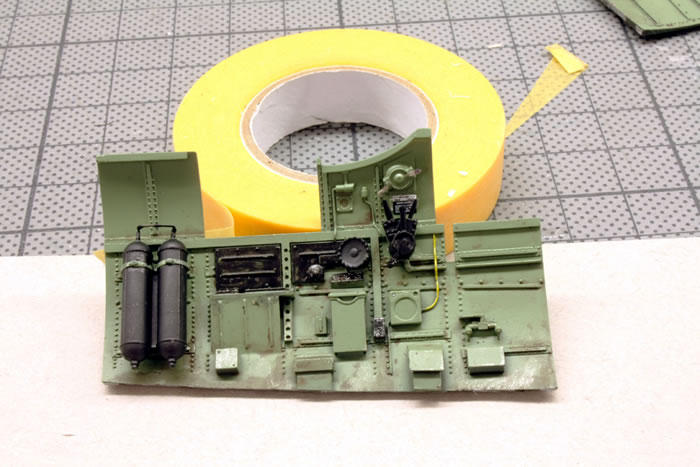
Right at the beginning: the price Revell paid for this Spitfire is hard to beat - and for this money you get a nice and beautifully shaped kit. So also the general dimensions are described by those, who actually measured, as convincing, yes in the comparison with other kits as exemplary coherent.
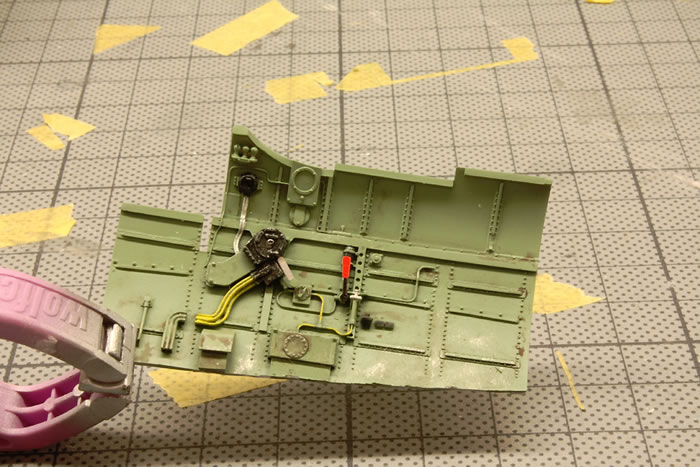
But the inner values can also claim to be coherent: Revell alone allows for the presentation of the cockpit with more than forty individual parts really enjoyable time, the structuring of the surfaces with a sound representation of rivets further increases the joy of the kit content.
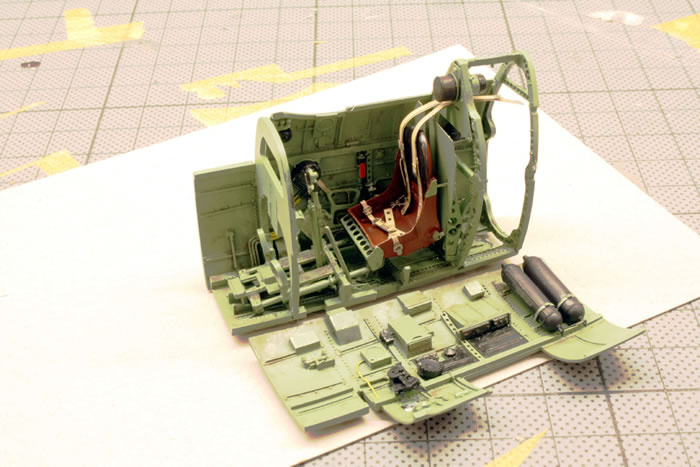
For the Spitfire connoisseur, there are discrepancies in the design of the spinner, which is too pointed and shows a form used for some series, but is not correct for the machines that can be displayed. A further expert objection concerns the ailerons, which were still covered with fabric in these early Mk.II models and thus, as on the existing parts, should not show any rivet structures. All those who are disturbed by this find comfort in the offer of the retrofitting industry and the possibilities to remedy this without much effort.
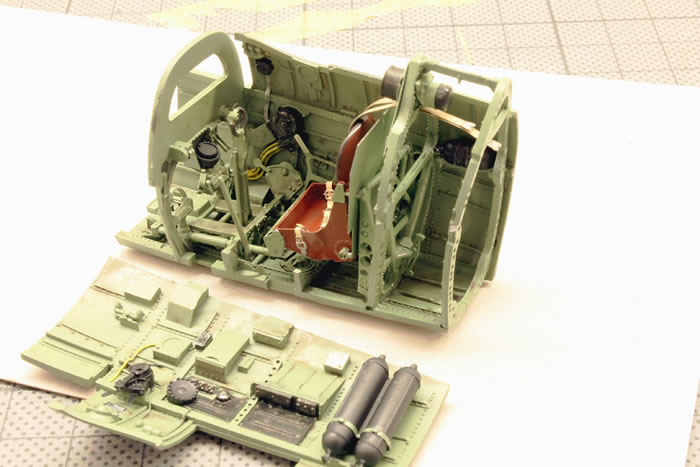
Is it any wonder that the accuracy of fit has proven to be very good with this kit? In fact, this was a model building project that went off relatively quickly, leaving time and resources for a few refinements.
This includes replacing the cockpit with Eduard's spectacular Brassin interior. This represents another dramatic improvement over the kit version mentioned above.
Changes were also made to the design of the position lights at the surface ends and at the rear: here, a tip of CA glue on a coloures background replaced the blunt plastic ends. Once applied with the tip of the needle, this adhesive hardens in a matter of seconds, the surface tension ensures (and if all goes well) an appropriately round shape.
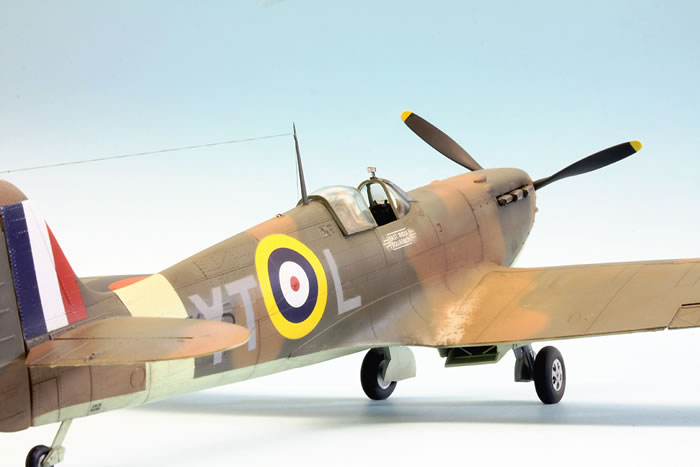
Minor improvements were also necessary in the form of brake cables on the landing gear legs. This is also the point of criticism: in my opinion the suspension legs are not detailed enough, the inside of the fairing seems to be too wide and rough.
A real adventure was the installation of the opened cockpit door. Fortunately, you can't see it from the finished model, but the resin flap was much wider than the opening Revell intended for it. Here I had to work with the scalpel to remove material from the painted model in order to get a good fit.
The attachment of the cockpit hood was also "suspensful" in the literal sense of the word. The component is unfortunately dimensioned for the seat with the cockpit closed. The result is that when the cockpit is open, the brittle transparent part has to be pressed onto the back of the fuselage with a lot of sure instinct until the two lower ends latch into the guide rails. In order to attach this pressurized constellation, I had no choice but to attach the transparent part with CA adhesive. Even if this worked well in this case and the glue did not cloud the transparent part, I would like to see this kit from Revell as a remedy for further issues.
The decals coming from the component are sharp, printed without offset and with suitable coloring and are usable - but they didn't excite me. Unfortunately they show a tendency to "silver" which cannot be eliminated by good preparation and post-processing with glossy clear varnish. Only the massive use of decal softeners was able to force a satisfactory result in the affected areas.
Last but not least: the Spitfire shown here shows P7665, an aircraft of the No.65 Squadron (East India) with the identification YT-L, as it was flown from Kirton-in-Lindsey in July 1941.
My summary of the kit is consistently positive: this will certainly not be the last Spitfire I will build from this kit! Revell has, despite the few compromises, really made a great contribution to this aircraft beauty on an attractive large scale!
If you are interested in the building process, please have a look here on Scalemates:
https://www.scalemates.com/profiles/mate.php?id=10148&p=albums&album=52644
As ever, remarks will be appreciated: ro.sachsenhofer@gmx.at
Model, Images and Text Copyright ©
2020 by Roland Sachsenhofer
Page Created 27 January, 2020
Last Updated
27 January, 2020
Back to HyperScale Main Page

|
Home
| What's New | Features | Gallery | Reviews | Reference | Resource Guides | Forum |